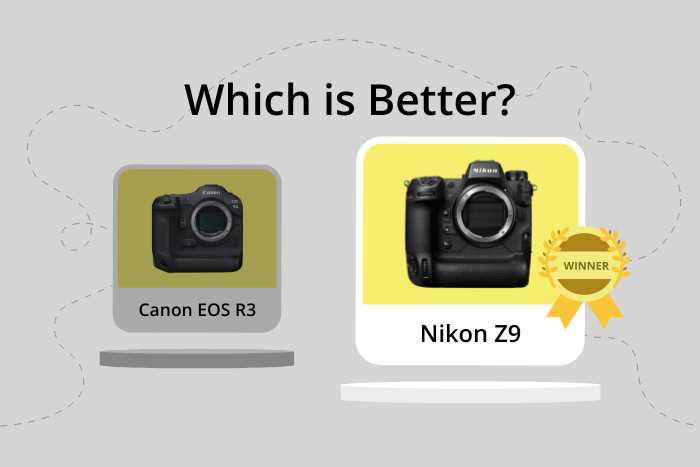Canon EOS R3 vs Nikon Z9 Comparison
Canon EOS R3
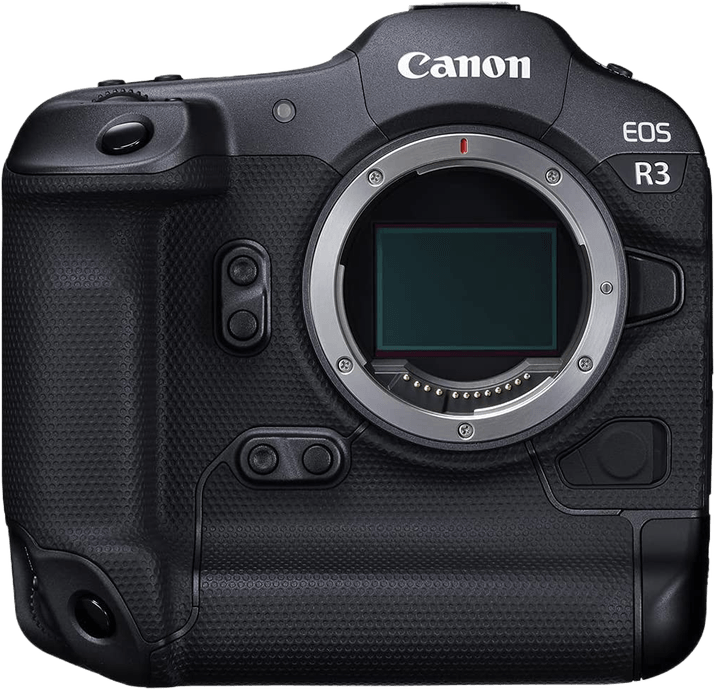
Nikon Z9
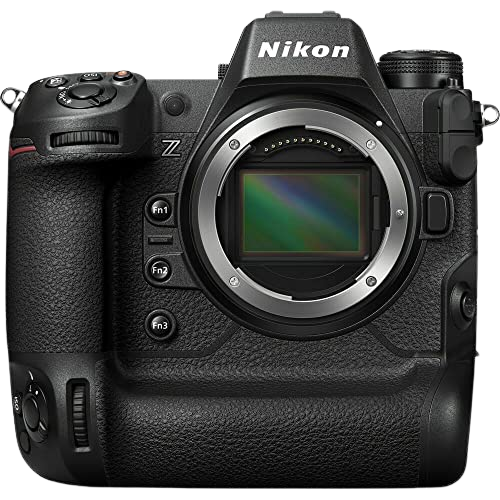
Nikon Z9 vs Canon EOS R3 Overview
Nikon Z9 vs Canon R3 is a tough call.
The Z9 is Nikon’s flagship full frame mirrorless camera. It comes with all the bells and whistles you’d expect.
It has a large sensor, excellent image quality, and eye detection AF (autofocus). However, its maximum frame rate of 20 fps is slightly disappointing.
The R3 is not quite at the top of the mirrorless tree for Canon. It shows in its small sensor size, which impacts resolution and video performance.
Yes, the smaller sensor gives the R3 a higher frame rate. Its larger pixels give it better low-light performance. And its Eye Control AF is an exciting innovation.
But those features don’t quite make up for the R3’s lack of resolution… However, these two mirrorless cameras are both solid options.
Body and Handling
Both the Nikon Z9 and the Canon EOS R3 have a magnesium alloy frame. And their overall dimensions are similar.
They’re the first two mirrorless cameras to offer an integrated grip. It helps battery life and ease of use when shooting in Portrait mode.
The Canon R3 is 11.4 oz (324 g) lighter. That’s a lot if you’re a wildlife photographer, especially if you use a long lens! You sometimes have to handhold in the field for hours on end.
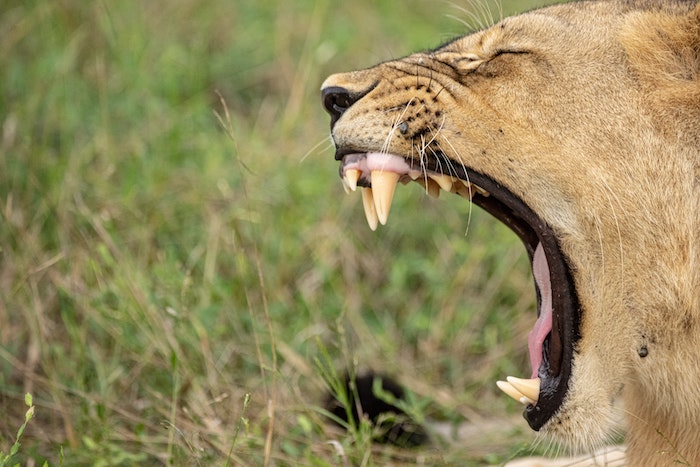
Available Lenses
I should also note that both Nikon and Canon were a bit late to the party with professional mirrorless cameras. That means the range of available lenses is not as broad as Sony‘s.
Nikon and Canon have a similar number of full frame, “native,” mirrorless lenses (33 Nikon Z-mount lenses vs 32 Canon RF-mount lenses). Canon has more telephoto primes. But Nikon has more standard and wide-angle primes.
Both cameras feature sensor-shift image stabilization, so you don’t necessarily need IS (Canon) or VR (Nikon) lenses. But it doesn’t hurt!
You can also use DSLR lenses on both cameras with an adapter (Canon’s EF to RF adapter or a Nikon adapter for F-mount to Z-mount or the FTZ adapter).
There are no glass elements in the adapters. So there is no loss of light or drop in autofocus performance that you usually get from a teleconverter or extender.
Optics
Resolution vs Frame Rate
Until recently, there was always a trade-off between sensor size and continuous shooting speed. The Sony a1 broke the mold by offering a 50 MP sensor and 30 fps RAW shooting!
These two cameras haven’t made the technological breakthroughs to do the same (despite the lack of a mechanical shutter on the Z9). But they approach the trade-off differently.
Both have back-side illuminated (BSI) stacked CMOS sensors. But the Z9 prioritizes image quality. The R3 emphasizes frame rate.
The Z9’s 20 fps continuous shooting speed with the electronic shutter doesn’t quite cut it for wildlife and sports photography. Equally, the R3’s 24.1 MP sensor is a dealbreaker for landscape photographers.
That’s why I chose to go with the Sony a1 instead. But the Canon R3 features an anti-flicker component and has a faster shutter speed, as seen in the specs below.
Nikon Z9 Autofocus
The Z9’s autofocus system uses a deep learning algorithm. According to Nikon, it can detect and track the world’s largest number of subjects. This includes people, dogs, cats, birds, bicycles, motorbikes, cars, trains, and airplanes.
It works with stills and video. And the new EXPEED 7 processing engine makes AF and AE (autoexposure) calculations at 120 cycles per second.
Eye Detect AF automatically tracks the eyes of people, dogs, cats, and birds. It works even if hair or glasses cover their eyes or if the eyes only take up a small part of your composition. It even works upside-down!
Like Nikon’s DSLR cameras, such as the D850, the Z9 offers 3D Tracking. But this time, it comes with “deep learning” subject detection.
This allows the autofocus system to lock on to fast-moving subjects. Then it follows them throughout the frame in all three dimensions.
The Z9’s autofocus works well in low light–all the way down to -6.5 EV or -8.5 EV in Starlight Mode. And you can even design your own focus areas with 20 custom wide-area AF (C1/C2) options.
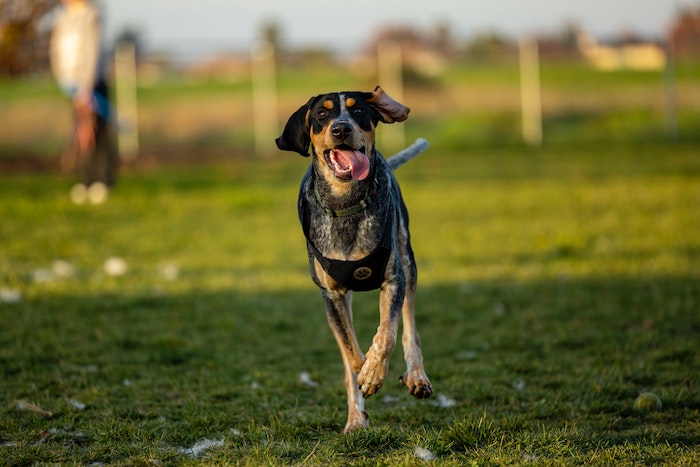
Canon R3 Autofocus
Canon claims the R3’s Dual Pixel CMOS AF II system is the fastest and most sensitive full frame sensor camera in the world. They say it can focus as fast as 0.03 seconds and in light as low as -7.5 EV.
It turns every pixel into a focusing sensor. Then, it groups pixels into 4,779 selectable focus points that cover 100% of the frame.
The R3 also boasts “next-generation subject tracking” based on deep learning artificial intelligence (AI). Canon engineers have used hundreds of thousands of images to “teach” the camera what to look for.
The R3 can recognize and follow people, animals, and motorsport vehicles. Subject tracking works on all AF area settings. And the refresh rate is 60 cycles per second.
Like the Z9, the R3 works in a hierarchical way. It looks for the eyes of the subject first, then the head, and then the body. In the case of motorsport, it “knows” it should focus on the driver’s helmet.
The R3’s most impressive autofocus innovation is Eye Control AF. All you need to do is look at something… and the camera will focus on it!
Eight infrared sensors monitor the position of your eye. Then they send the focus point to the relevant part of the frame. I haven’t tried it yet. But it could be a game-changer for sports and wildlife photographers!
Electronic Viewfinder (EVF)
Another main difference is in the EVF. It’s better on the Canon R3.
Nikon claims its viewfinder is the world’s first blackout-free electronic viewfinder and the brightest on the market at 3,000 nits. It does have a slightly higher magnification than the one in the R3 (0.8x vs 0.76x).
But the R3 has double the refresh rate (120 Hz vs 60 Hz) and more than 50% more resolution, as shown below.
Canon R3 Advantages and Similarities
As we can see below, the Canon R3 has an advantage over the Z9 in several areas. It’s also better with the following:
- Highest continuous shooting speed in RAW (30 fps vs 20 fps)—although the buffer is only 150 shots vs 1000+ on the Z9
- Number of focus points (4779 autofocus points)
- Sensor-shift image stabilization (8 EV vs 6 EV, depending on the lens) plus digital stabilization
But both cameras have the following:
- Face detection
- Eye tracking,
- Automatic exposure and focus bracketing
- Focus stacking
- Blackout-free shooting
- Minimal rolling shutter effect with the electronic shutter.
Canon EOS R3 vs Nikon Z9 Video Performance
Mirrorless cameras offer better video capability than DSLRs. And the Nikon Z9 and Canon R3 are no exception.
The Nikon Z9 has a higher-resolution sensor and thus the ability to record in 8K. But you need an 8K monitor to appreciate it. And not many people have those! The Canon R3’s 6K video should be more than enough for most videographers.
Both cameras do the following:
- Use the full sensor area
- Offer 8-bit and 10-bit recording
- Can shoot for longer than the usual 30-minute limit
- Shoot time-lapse
The Nikon Z9 is capable of 8K video at 30p, 25p, and 24p, using the H.265 codec with a resolution of 7680 x 4320. It can also shoot 4K Ultra HD video at 120p, 60p, and 30p (with oversampling at 30p). A firmware update allows you to shoot 8K 60p and 8K RAW internally.
The Canon R3’s 24 MP sensor means its highest-resolution video format is “only” 6K with a resolution of 6000 x 3164. It can shoot 6K at 60p, 50p, 30p, 25p and 24p with the option of internal 12-bit RAW recording. It can also shoot 4K at 120p, 60p, and 30p.
Canon EOS R3 vs Nikon Z9 Features and Benefits
The Canon R3 has the advantage over the Z9 in several areas:
- Flash sync speed (1/250 s vs 1/200 s)
- A Flash sync port
- An anti-dust shutter mechanism
But apart from not having a built-in flash, the Nikon Z9 and the Canon R3 tick all the other boxes:
- RAW support
- Wireless and Bluetooth connectivity
- An external flash shoe
- Microphone and headphone ports
- Smartphone remote control
- Webcam function
- Illuminated buttons
- An LCD on the top plate
The R3 has a better LCD. The one on the Nikon Z9 works on four axes. This means you can tilt it up and down in landscape or portrait mode.
However, you can use the R3’s LCD at any angle. You can even flip it out to the side and turn it 180 degrees for selfie shooting and vlogging. And it also has nearly twice the resolution.
Canon EOS R3 vs Nikon Z9 Storage and Battery
The Nikon Z9 has two CFexpress Type B card slots. But the Canon EOS R3 has one CFexpress Type B card slot and one that takes SD cards.
Canon can argue that SD cards are cheaper and more popular. But they’re just not as fast. So why would they try and keep amateurs happy when making a camera for professionals?
The Canon R3 has slightly better battery life. Still, my experience of the Sony a1 suggests the official CIPA numbers vastly underestimate the number of pictures mirrorless cameras can take per charge in continuous mode.
Canon EOS R3 vs Nikon Z9 – Our Verdict
In the debate of Nikon Z9 vs Canon R3, both are excellent full frame mirrorless cameras. Their specifications are strong across the board.
According to DXOMARK, the Nikon Z9 beats the Canon EOS R3 on image color depth and dynamic range. But the R3’s larger pixels of 36.00 µm² vs 18.88 µm² (square micrometers) give it a much higher low-light sensitivity. As we see above, the Z9’s score is two points higher.
As a wildlife photographer, my priorities are sensor resolution, RAW frame rate, and eye detection autofocus. The Z9 doesn’t quite match the frame rate of my Sony a1. And the Canon EOS R3 doesn’t quite match the resolution.
So, where does that leave us? Well, I’m a perfectionist. So I probably wouldn’t be happy with either of these cameras!
However, the small sensor makes the Canon R3 seem like too much of a compromise. So I’d probably go for the Nikon Z9. But perhaps you disagree?
What Camera is Better Than the Nikon Z9?
“Mine” is the short answer! The Sony a1 isn’t perfect. But it ticks all the boxes concerning sensor size, RAW frame rate, and eye detection autofocus.
Yes, the Z9 might offer slightly better color depth and dynamic range at a much lower price. However, the Sony a1 has a 50 MP sensor and can shoot at 30 fps.
It also performs better at high ISOs, has a sensationally bright and clear EVF, and weighs just over half as much as the Z9!
If you want to check out more camera specs, try these popular comparisons next:

